Ottoman sofas: types, sizes and examples in the interior

The Ottoman is one of the symbols of elegance and style. However, it would be completely wrong to call it out of date, because today's sofas very often represent nothing more than, in fact, a sofa and an ottoman, forming corner upholstered furniture folded, and disassembled - a comfortable sleeping place.


What is an ottoman?
An ottoman is called a pouf or a couch, which can both join the couch, and to be at some distance from it, performing the functions of a seating position, a footrest and even a small table in some models. It can have both a contrasting design and represent a single color and style composition with upholstered furniture.
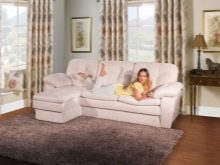
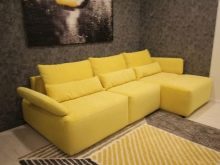

Advantages and disadvantages
Like any other piece of furniture, ottoman sofas have advantages and disadvantages. The benefits include the following:
- the models are stylish, multifunctional and very comfortable;
- transforms into a sleeping place, which can be compared in size to a double bed;
- a huge selection of models in various colors and styles.



The disadvantages of the design include:
- most products are expensive;
- in order to comfortably place such a sofa, you need a lot of free space, so it will be difficult to put it in a room with a small area and a narrow doorway.


Species overview
Ottoman sofas come in several designs.
- Folding. These are transformer models that, when assembled, look compact and mobile, and disassembled - like a full and comfortable sleeping place.Pull-out and folding mechanisms for transforming sofas are different - these are "accordion", "dolphin", "tick-tock", "eurobook" and "sedaflex".


- Non-folding structures can only be used as sofas. They are most often placed in the living room or in a large spacious hallway.

- Modular. These models are, in fact, a constructor, their parts can be rearranged at will. As a rule, each module has several fasteners, and the furniture can be assembled in different ways depending on the wishes of the owner.


Folding
There are several types of folding sofas. They differ in mechanisms and methods of unfolding. For example, in the Euronizka mechanism everything works very simply - the seat moves forward, and the backrest is lowered to the seat.
In order to make it more convenient, it is better to equip the sliding part with wheels. If they are not there, the flooring could be damaged.

"Tick-tock" - one of the varieties of "Eurobook"... The folding structure consists of a metal frame and additional springs.

The sleeping place is obtained like this: the seat moves up and forward, then it goes down in a semicircle. The backrest takes the place of the seat. Due to the presence of springs, no wheels are required, it is impossible to damage the floor covering with such a mechanism. That is why sofas with this mechanism are more expensive.
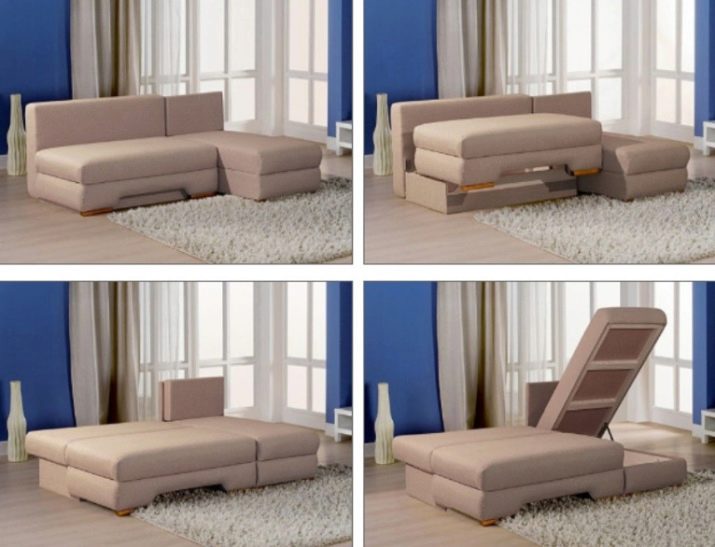
"Dolphin" - on the contrary, the mechanism is old. The transformation of a sofa into a bed takes place in a two-step way. First, an additional berth is pulled out from under the seat, and then, by means of hinges or other gripping methods, it rises one level with the seat. There are either no storage boxes for bedding in these sofas, or they are in an ottoman.

The simplest mechanism, but requiring sufficient strength from a person, is an "accordion"... You can unfold such a sofa by making only one movement, but a lot of force must be applied to this movement. There are no spring blocks in such sofas, "accordions" are incompatible with them.


Regarding the mechanism Sedaflex, this is not an option for every day. For daily use, it is inconvenient, and it becomes unusable from frequent collection and disassembly. The layout is done in several stages:
- first you need to remove the cushions that make up the seat;
- pull the seat up and forward, put it on a support;
- unfold the berth completely, straightening the supports.


Non-folding
These models do not form a berth and do not transform into anything. They always represent a sofa and an ottoman, which is either part of the structure, or a free-standing and optional part. But they can have the most original forms due to the back and armrests.


Modular
Modular models can be rigid or free in design. Modules are elements that are connected to each other conditionally - with Velcro or belts. You can rearrange modules at least every day, collecting them in different ways. Many firms produce modules that fit various sofas, they can be purchased separately if needed.
Modules can be assembled in a U-shaped sofa, an island sofa, as well as in the more familiar corner and straight models.


Materials (edit)
An ottoman is made up of elements such as a frame, padding, upholstery and legs. The frame can be wood, plywood, lumber and made of chipboard. It is better to choose a model for the production of which either high-quality wooden beams or plywood. In this case, the risk of deformation is much less.

Used as a filler synthetic fluff or holofiber... They are hypoallergenic, do not lose their shape, and are not affected by dust mites. Also fillers can be replaced with spring blocks.

Upholstered sofas with ottomans or leather (both natural and eco), or textiles... Textiles are more environmentally friendly material, but wears out faster. Jacquard, chenille, flock can be used as textile upholstery.



The legs should be made of strong and stable material that can support a lot of weight. It is either steel or solid wood.

Shapes and sizes
The standard size of a corner sofa is quite suitable for a small apartment. The minimum size can be 2-2.1 m (we are talking about the length of the central part). Kitchen models can be even more compact. As for non-standard solutions, they can be both large and (at the request of the customer) very large, with a retractable backrest or folding structure, or generally made up of a large number of pouf-modules.


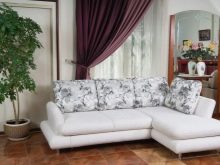
Color palette
Most often, it is upholstered furniture that is the main accent in the room, including color. It can be matched to the rest of the objects in the interior, or, conversely, contrast with them. The most popular neutral light shades are gray, beige, milky. They look good in any style, especially in a modern urban setting.
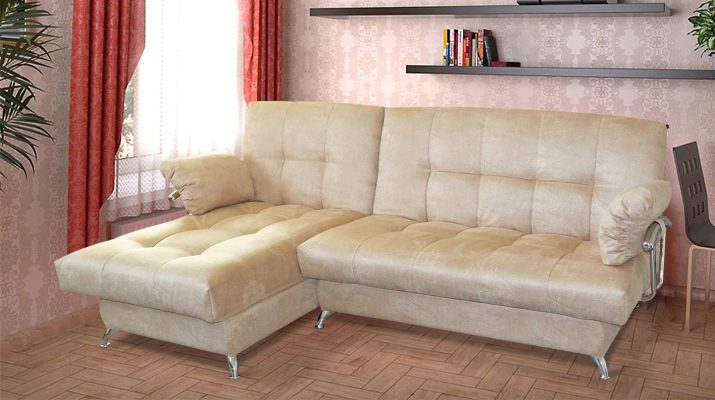
White color upholstered furniture, despite its soiled and impractical, retains a leading position in demand and popularity. This is due, firstly, to the fact that, being white, even the most bulky furniture looks light, and secondly, white furniture gives the room a feeling of cleanliness, freshness (provided, of course, that the white upholstery remains white and undergoes timely cleaning) ...
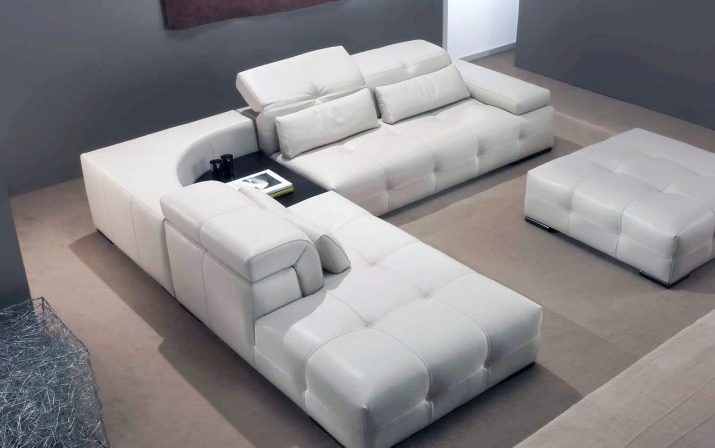
Shades gray are also very popular and can be used in almost any interior. The gray scale is quite extensive and includes both light tones - ashy, silver, and dark - wet asphalt, mouse, etc. Such shades are perfect for interior decoration in a modern style.

Light sofas Looks good in rooms with dark floors and walls. They will create the necessary color accent and give lightness to the interior. It can be interesting to purchase a sofa and curtains of the same extraordinary color, for example, mint, turquoise, lemon or pistachio. Then you can get a modern interior in Mediterranean style.

Natural tones in the interior are also extremely in demand. Beige, milky or ivory are shades that are appropriate in a room for any purpose.

Criterias of choice
When choosing upholstered furniture, be sure to take into account its size. Ottoman sofas are oversized and need a lot of space to look harmonious. The standard rule is that the sofa should not be longer than two-thirds of the wall along which it is located. Assuming that the average length of a sofa is 2 meters, the wall must be at least 3. You must also take into account the width and depth of the product.
Be sure to think about what other furniture will be in the room. Since sofas with ottomans are oversized, the abundance of objects in the same room with them can create the impression of clutter.
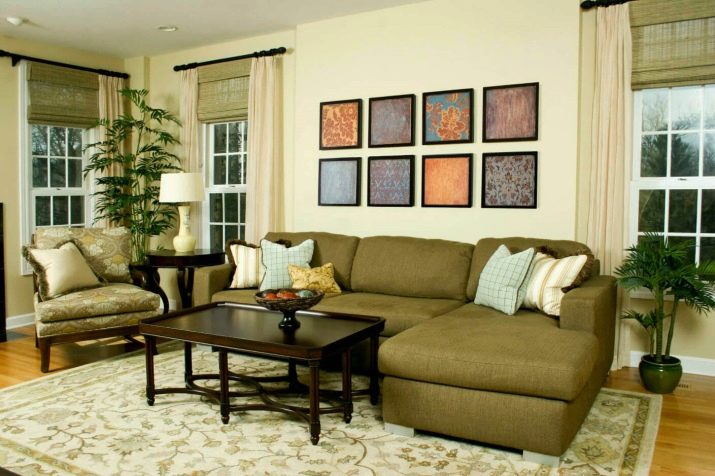
It is also necessary to take into account what the sofa is purchased for. If you need a comfortable sleeping place, it makes sense to purchase a folding model... If you have a bed, but you are looking for a comfortable place to relax, then you can stay on the original modular or non-folding model. In a small room, a product with an ottoman standing separately from the general structure may not look very harmonious, then it is better to choose a corner model that is not equipped with a folding mechanism.
The less free space, the smoother the lines of the product and the more rounded the corners.
If you plan to use the sofa all the time, choose one that is easy to clean and maintains an attractive appearance for a long time.


Where to put?
A sofa with an ottoman will look good in the living room, in the kitchen, and in the bedroom. True, for the latter, it is better to choose a transformer model with a roll-out or sliding structure so that it can turn into a sleeping place.Also, folding sofas look good in studio apartments or in one-room apartments, where the living room and bedroom are combined with each other.
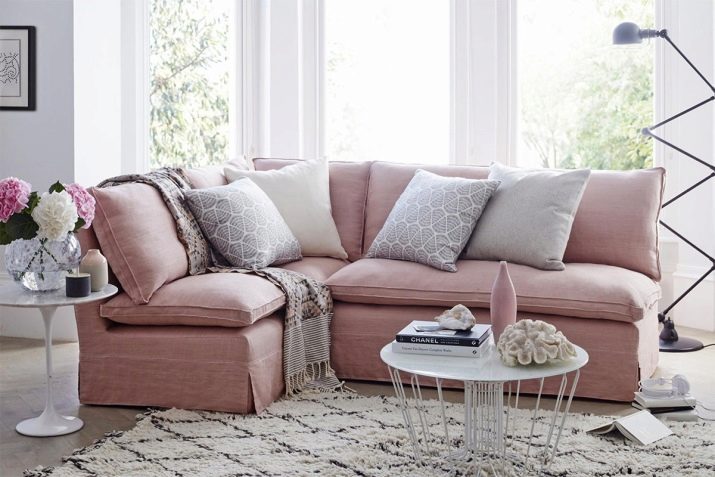
Non-folding sofas of an unusual shape are comfortable and beautiful, they are good in living rooms, especially in those with a large area. It is good to set the ottoman separately as a stand-alone seating or footrest.

Modular options are most suitable for those who like to make changes to the interior. You can rearrange the poufs and "spare parts" of the sofa in different ways, each time achieving new solutions. The more modules the product contains, the more options for rearranging them.

Examples in the interior
Bright color and impressive dimensions are the trump cards of this sofa, which, of course, is the central subject of the room's interior.

The luxurious sofa, upholstered in black leather, is also practical - it has plenty of storage space for bedding.

The neutral color of the upholstery and the bright accents in the form of cushions are the perfect combination.

Ottoman in a contrasting color harmonizes with the cushions on the sofa.

A modular sofa with an ottoman will look really chic in a large room.

The following video provides an overview of the "Soft" sofa with an ottoman on the click-and-gag mechanism.








